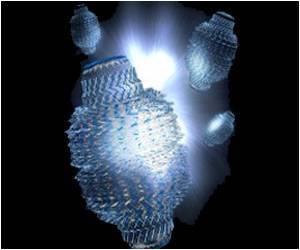While it gets quite difficult to manipulate tiny objects like single cells or nanosized beads via relatively large, unwieldy equipment, Penn State engineers have now designed a new
While it gets quite difficult to manipulate tiny objects like single cells or nanosized beads via relatively large, unwieldy equipment, Penn State engineers have now designed a new system that uses sound as a pair of tiny tweezers that are small enough to place infinitesimal objects on a chip.
While optical tweezers are large and expensive, acoustic tweezers are smaller than a dime, small enough to fabricate on a chip using standard chip manufacturing techniques.They can also manipulate live cells without damaging or killing them.
"Current methods for moving individual cells or tiny beads include such devices as optical tweezers, which require a lot of energy and could damage or even kill live cells. Acoustic tweezers are much smaller than optical tweezers and use 500,000 times less energy," said Tony Jun Huang, assistant professor of engineering science and mechanics.
Acoustic tweezers differ from eyebrow tweezers in that they position many tiny objects simultaneously, and place them equidistant from each other in either parallel lines or on a grid.
And the grid configuration of acoustic tweezers is probably the most useful for biological applications where researchers can place stem cells on a grid for testing or skin cells on a grid to grow new skin, which allows them to see how any type of cell grows.
"Acoustic tweezers are not just useful in biology. They can be used in physics, chemistry and materials science to create patterns of nanoparticles for coatings or to etch surfaces," said Huang.
Advertisement
If two sound sources are placed opposite each other, and each emits the same wavelength of sound, there will be a location where the opposing sounds cancel each other and it can be considered a trough.
Advertisement
If the sound comes from two parallel sound sources facing each other, the troughs form a line or series of lines.
If the sound sources are at right angles to each other, the troughs form an evenly spaced set of rows and columns like a checkerboard. Here too, the particles are pushed until they reach the location where the sound is no longer moving.
The acoustic tweezers are manufactured by fabricating an interdigital transducer onto a piezoelectric chip surface. The transducers are the source of the sound.
Using standard photolithography, microchannels are fabricated in which a small amount of liquid with the cells or particles can move around freely.
These microchannels were bonded to the chip to create the area for particle movement.
For testing the device, the researchers, used Dragon Green fluorescent polystyrene beads about 1.9 micrometers in diameter before using cows red blood cells and the single cell bacteria E. coli.
"The results verify the versatility of our technique as the two groups of cells differ significantly in both shape (spherical beads vs. rod-shaped E. coli) and size," said the researchers
Acoustic tweezers technology has significant advantages over existing technologies because of its versatility, miniaturization, power consumption, and technical simplicity.
According to Huang, it could become a powerful tool for applications like tissue engineering, cell studies, and drug screening and discovery.
The study has been published in a recent issue of Lab on a Chip.
Source-ANI
TAN









